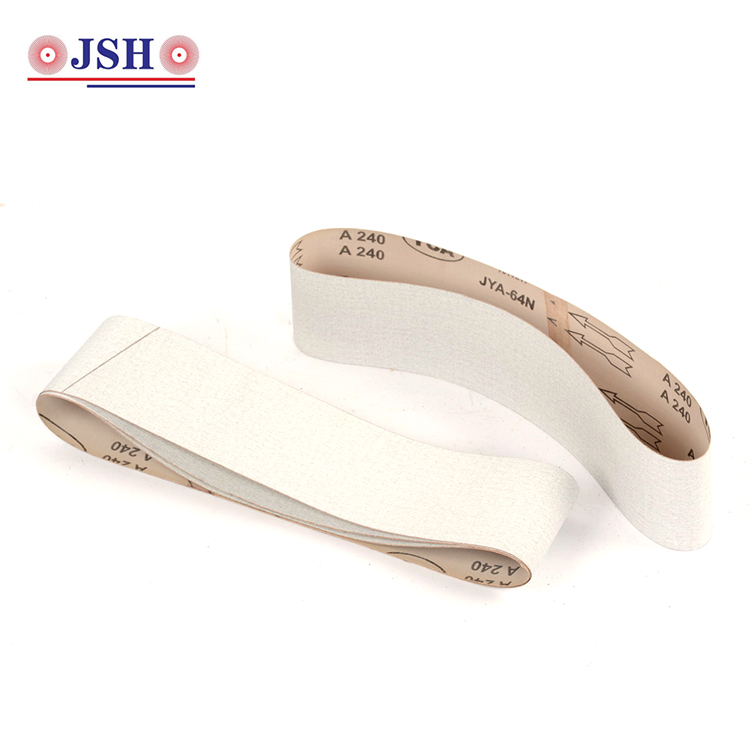Abrasive belts are versatile tools commonly used in various industries for grinding, sanding, polishing, and shaping different materials.
Whether you're a professional craftsman, a DIY enthusiast, or an industrial worker, understanding abrasive belts and their applications can significantly enhance your productivity and achieve desired results.
Abrasive belts are narrow, continuous loops of coated abrasive material, typically made from a strong backing such as cloth, paper, or polyester, with abrasive particles securely bonded to it.
Abrasive belts feature a variety of abrasive grains, including aluminum oxide, silicon carbide, and zirconia alumina, each suitable for specific applications. The abrasive particles on the belt's surface perform the cutting, grinding, or polishing actions when the belt is in motion.

● Aluminum Oxide Belts
● Silicon Carbide Belts
● Zirconia Alumina Belts
● Ceramic Belts
● Non-Woven Belts
● Metalworking
Abrasive belts are extensively used in metal fabrication, ranging from deburring and surface blending to stock removal and precision grinding.
● Woodworking
In woodworking, abrasive belts are employed for tasks like dimensioning, sanding rough surfaces, and achieving a smooth finish on wood pieces.
● Automotive Industry
Abrasive belts find applications in the automotive sector for tasks such as removing paint, rust, and surface imperfections, as well as polishing metal components.
● Aerospace Industry
Abrasive belts are crucial for aerospace applications, including edge shaping, surface finishing, and composite material preparation.
● Glass and Ceramics
These delicate materials require abrasive belts to cut, shape, and finish them precisely.
● Leatherworking
Abrasive belts help in leather preparation, including cleaning, smoothing, and shaping the material.
● DIY and Home Improvement
From refinishing furniture to sanding drywall, abrasive belts are invaluable tools for various home improvement projects.
Selecting the right abrasive belt involves considering several factors. These include the material you're working on, the desired finish, the level of stock removal required, and the specific characteristics of the abrasive belt, such as the type of abrasive grain, grit size, backing material, and belt width.
The lifespan of an abrasive belt depends on various factors, such as the material being worked on, the application, the belt's quality, and the operating conditions. It's important to monitor the belt's condition and replace it when the abrasive particles wear down or the backing becomes damaged.
To extend the lifespan of abrasive belts, it's important to follow proper maintenance practices.
● Regularly cleaning the belts to remove debris and built-up material using a cleaning stick or a belt cleaning tool.
● Storing belts in a cool, dry place to prevent moisture and humidity from affecting the adhesive bond.
● Avoiding excessive bending or flexing of the belts, as it can cause premature wear or cracking.
● Using a belt tracking system to ensure the belt runs smoothly and evenly on the machine.
● Inspecting the belts before and after use for signs of damage, such as tears, fraying, or loss of abrasive particles, and replacing them if necessary.
Safety should be a top priority when working with abrasive belts. Some essential precautions include:
● Wearing appropriate personal protective equipment (PPE), including safety glasses, gloves, and respiratory protection if required.
● Ensuring the machine is properly guarded and in good working condition.
● Securing the workpiece firmly and using clamps or a vice whenever possible.
● Avoiding excessive pressure on the belt to prevent slippage or sudden belt breakage.
● Keeping hands, fingers, and loose clothing away from the moving belt and machine components.
● Following the manufacturer's instructions and recommended operating speeds for the abrasive belts.